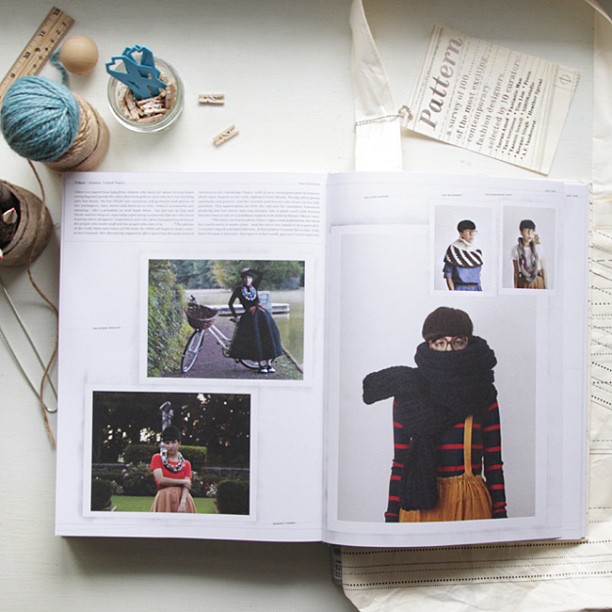“Phaidon’s Ghost of Fashion Present,” Originally published in The WILD Magazine. â—Šâ—Š
A survey book of contemporary fashion faces the hard task of convincing its reader not only of its authority and soundness in judgment, but also of its enduring relevance in an industry that is defined by flux. Phaidon, now known for its fearless surveys of nebulous subjects, has published PATTERN (Phaidon Press, 2013), a monolith that the publishers have described as a “catwalk-in-a-book.â€
Like its elder sister SAMPLE (Phaidon Press, 2005), PATTERN is really an extended editorial in which ten industry experts each present ten of their favorite designers to represent fashion’s terrain. The set up is ingeniously clever. It not only avoids engaging with the failing goal to be objective, but it also avoids projecting into the future, looking as the present as an already dated time. PATTERN can thus be both cutting-edge and historic—truly an authoritative archive of the present.
It is easy to imagine how one would want to look back on this volume, years from now. It commemorates, for example, Sarah Burton’s first collection for Alexander McQueen, and the new era of Valentino led by Maria Grazia Chiuri and Pierpaolo Piccioli. PATTERN also gives an expected nod to a variety of current industry staples like Alexander Wang, Philip Lim, and Gareth Pugh. The real virtue of such an expansive book, of course, is its ability to introduce a surfeit of lesser-known talents no less deserving of praise. The book’s project is an admirably democratizing one above all else.

PATTERN’s real insight, however, is subtler. More than merely suggesting our taste for patterns, the book holds a mirror to the ways in which our consideration and consumption of fashion is shaped by our global environment. In a moment of grave clarity in the introduction, the editors of Phaidon write that relative to its more self-assured predecessor SAMPLE, PATTERN reflects an industry affected by the global economic downturn and international unrest. (Though, I might argue that fashion has been made in abject moods for decades.) This observation does leave one wanting for a greater variety in contributors; of the ten featured, six are from New York or London, and only one is not from Europe or the States.
More surprising (or perhaps not) is evidence of the magnificent influence of the Internet in pushing critics and designers in front of the public eye. Among PATTERN’s arbiters are the young and sharply discerning blogger Tavi Gevinson, and experimental fashion media website SHOWstudio, piloted by Nick Knight. Featured designers include Yokoo (pictured above)—a visionary and enigmatic knitter whose presence exists primarily through Tumblr, Flickr, and Etsy—and Kim Jones of Louis Vuitton, who contributor Fantastic Man praised as “one of the first designers to fully embrace Facebook and Twitter.†As we progress deeper into the age of the immaterial, the weight of PATTERN will serve as a nice reminder for these moments of change.
See also my personal follow-up essay. Images courtesy of Yokoo and Phaidon.